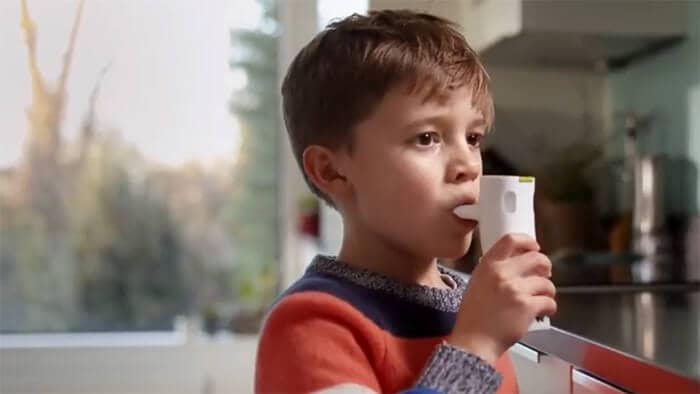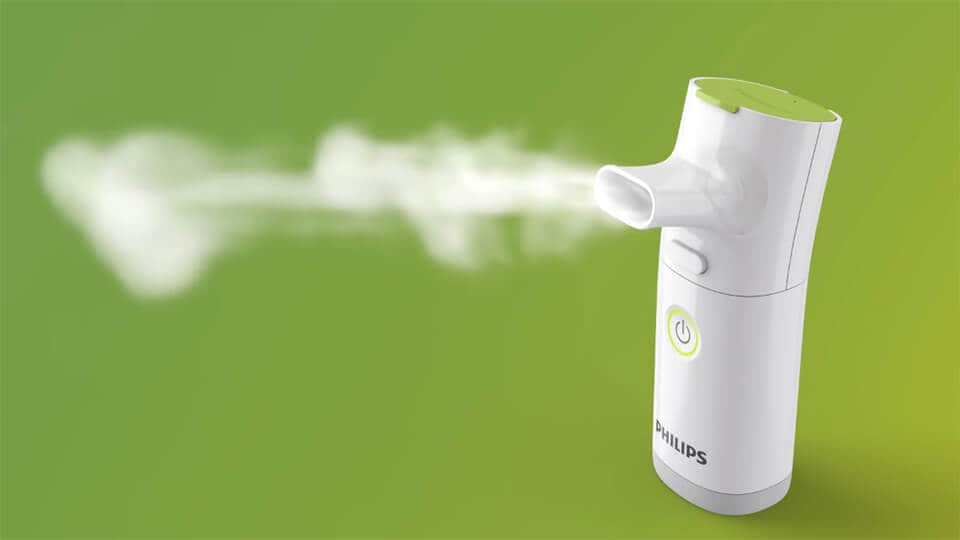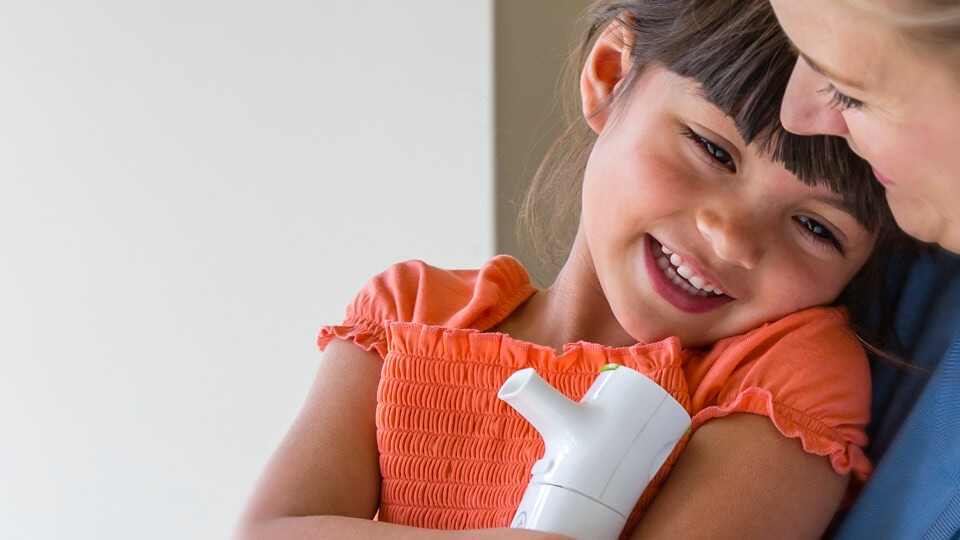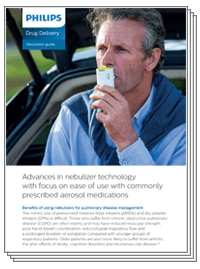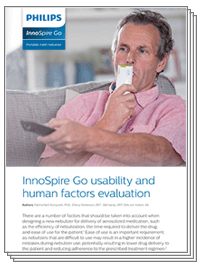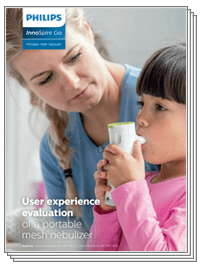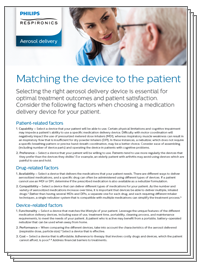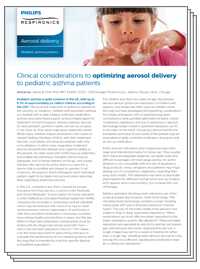Advantages of Philips InnoSpire Go mesh technology
The Philips InnoSpire Go portable nebulizer uses Aerogen's clinically proven vibrating mesh technology to deliver fine aerosol mist into the lungs.
Vibrating mesh technology allows for the consistent delivery of aerosol in an optimal particle size (<5 microns). This particle size is highly suited for depositing medication in deep areas of the lungs, where a variety of commonly prescribed medications are most effective for the treatment of asthma and COPD.
Learn more about Aerogen’s clinically proven vibrating mesh technology
Patient-centric solution-based CARE
To help you choose the correct device and follow-up care for your patient from the Philips RDD portfolio, we created this tips sheet.
C
Characteristics of the device
Understand the features and performance of devices
A
Abilities of the patient
Assess physical capability, cognitive capability, needs, preferences and financial resources
R
Readiness to start therapy
Educate about proper use and address concerns/questions early
E
Efficacy of the treatment
Monitor adherence, outcomes, satisfaction and technique
Matching the aerosol delivery device to the needs of the patient
The freedom to live an active life and participate in normal activities is vitally important for COPD and asthma patients. For too long, however, many individuals have been held back by traditional table-top jet nebulizers that need to be plugged into a home power socket, provide slow treatments, can be overly noisy and lack portability. However, a next generation of mesh nebulizers offers several advantages over jet nebulizers and, for some patient groups, both pressurized metered dose inhalers (pMDIs) and dry powder inhalers (DPIs).1 These mesh nebulizers are portable, provide fast treatments, are quiet and deliver efficient nebulization.2 Together, these qualities have the potential to help give your COPD and asthma patients freedom to enjoy the important things in life, combining the benefits of total portability with the time that comes from the mesh nebulizer’s ability to deliver medication quickly, efficiently and in an easy-to-use way.
Check out the key features of the Philips InnoSpire Go portable nebulizer.
Improving lives for everyone, young and old
These features can be beneficial for COPD patients, who are often elderly and may have reduced muscular strength, poor hand-breath coordination, reduced peak inspiratory flow and prolonged duration of exhalation compared with younger groups of respiratory patients.1
This technology can also provide a vastly improved experience for pediatric asthma patients. Children under four who haven’t yet developed the proper breathing coordination can benefit from easy-to-use portable nebulizers that can be used with or without a facemask.
Battery-operated nebulizers are well-suited for children – they can fit in the palm of their hand and have come a long way from the bulky electrically powered jet compressor nebulizers of the past.

Simple, fast, near-silent, long-lasting
The Philips InnoSpire Go portable mesh nebulizer is designed to reduce the overall treatment burden for patients and shorten treatment times when compared with similar devices. It helps provide a simple, easy and discreet therapy experience and is fully portable, meaning that patients can take their treatments anywhere outside the home. The Philips InnoSpire Go is designed to deliver aerosol treatments in 4 minutes.3 After rapidly delivering the dose, the device emits a sound before automatically switching off. This solves the common patient problem of having to guess when the treatment has ended. With a built-in long-life rechargeable battery – providing 30 treatments (120 minutes of use) between charges – the InnoSpire Go is designed to provide the best possible patient experience. It is lightweight and virtually silent when in operation, and with only two parts, is simple for the patient both in terms of ease of use and cleaning.
How to Use the InnoSpire Go
Reporting improved experiences
The Philips InnoSpire Go is designed to offer improved ease of use compared to traditional jet nebulizers. In a 30-day home-use test4 of the InnoSpire Go portable mesh nebulizer:

of parents surveyed agreed that it was "easy to use within my child’s current treatment regime”

of parents agreed with the statement "I would recommend InnoSpire Go to other parents or families"

said that their child felt confident using InnoSpire Go outside the house

of parents surveyed agreed with the statement "my child generally ‘felt good’ about using the InnoSpire Go"
Sign-up to stay informed and receive marketing communications from Philips.
(Please be sure to check the box to receive communications from Philips)
References 1 Dhand R, Dolovich M, Chipps B, Myers TR, Restrepo R, Farrar JR. The role of nebulized therapy in the management of COPD: evidence and recommendations. COPD. 2012; 9:58-72. 2 Pritchard JN, Hatley RHM, Denyer J, von Hollen D. Mesh nebulizers have become the first choice for new nebulized pharmaceutical drug developments. Ther. Deliv. 2018; 9(2):121–136. 3 Using 2.5ml salbutamol 4 2019 UK home use test, N=81 parents of children using InnoSpire Go for 30 days
